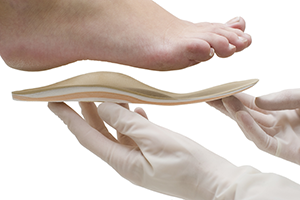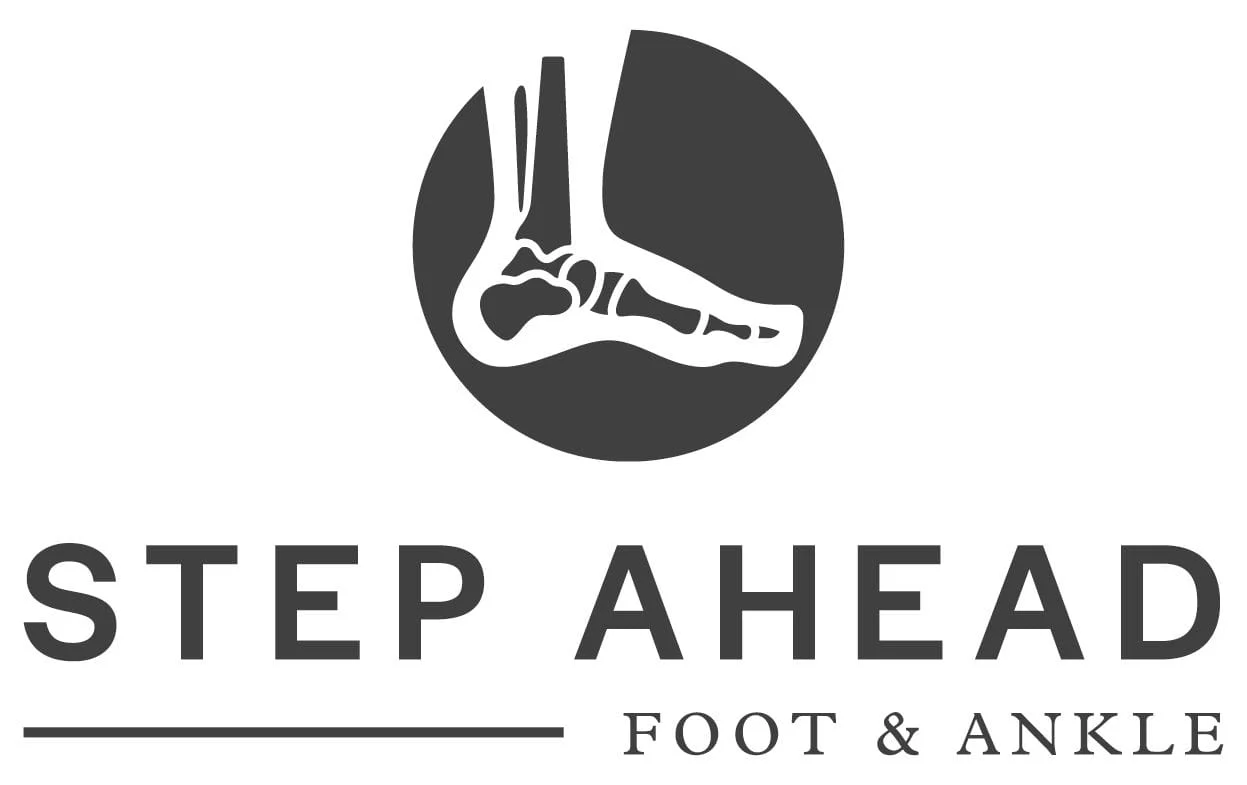Insoles & Orthotics are a popular solution for a number of foot-related issues, and can be very effective at reducing pain and addressing underlying biomechanical concerns. The purpose of this page is to describe the differences between the insoles and inserts (sold in stores) and the prefabricated and custom foot orthotic offered at Step Ahead Foot & Ankle Clinic.
Insoles / Inserts
Insoles, also known as inserts, are the product that you can find in pharmacies, large department and sport goods stores.
Insoles offer cushioning and support to the foot. While this may provide some short-term relief, insoles are mass-produced and designed to suit as wide a range of people as possible. While they may help, they can only go so far in terms of actually addressing the root cause of the problem, and symptoms often persist, or possibly worsen over time if not properly addressed.
Prefabricated Orthotics
Orthotics are similar to inserts, but with the important distinction of being professionally selected (prefabricated) or custom made. Most prefabricated orthotics are medical grade, and offer enough support and correction that they cannot be sold in stores, although they still are mass-produced. They are selected by your podiatrist to not only address the specific issue that you have, but also to accommodate the foot structure you have.
At Step Ahead, different types of prefabricated orthotics are offered, based on your needs, foot structure, and expectations. Your prefabricated orthotics may be modified to meet your needs. These adjustments are performed on-site by trained technicians.
Prefabricated orthotics usually last 6-9 months, depending on activity level and needs.

Custom Foot Orthotics
Custom Orthotics made from a cast or scan of your individual foot. They are made to fit you, and no one else. They are designed to not only address your specific foot issue, but also to fit your feet perfectly, not approximately. This greatly increases their effectiveness in reducing pain and correcting existing mechanical imbalances.
Like insoles, custom orthotics can also be used to cushion your feet and provide arch support, but much more effectively (accommodative orthotics have this main goal). Unlike insoles though, orthotics can also be used to correct the way we stand and walk (called functional orthotics). Even the slightest deviation in your feet can lead to effects on the shins, knees, hips, and back. Custom foot orthotics address this by spreading the pressure evenly throughout your feet, realigning the bones in your feet, and making sure that your feet hit the ground at the right angle.
At Step Ahead, your well-trained podiatrist casts or scans your foot personally and in a specific way to address your concerns. At Step Ahead, adjustments, if necessary, are performed on-site and by trained technicians.
Custom foot orthotics can last up to 5 years, depending on activity level and needs
Types of Custom Foot Orthotics

Foot Orthotics come in many shapes, sizes, and materials and fall into three main categories: those designed to change foot function, those that are primarily protective in nature, and those that combine functional control and protection.
Rigid Orthotics
Rigid orthotic devices are designed to control function and are used primarily for walking or dress shoes. They are often composed of a firm material, such as plastic or carbon fiber. Rigid orthotics are made from a mold after your podiatrist takes a plaster cast or other kind of image of the foot. Rigid orthotics control motion in the two major foot joints that lie directly below the ankle joint (talonavicular and subtalar joints) and may improve or eliminate strains, aches, and pains in the legs, thighs, and lower back.
Soft (or Accommodative) Orthotics
Soft orthotics are generally used to absorb shock, increase balance, and take pressure off uncomfortable or sore spots. They are usually effective for diabetic, arthritic, and deformed feet. Soft orthotics are typically made up of soft, cushioned materials so that they can be worn against the sole of the foot, extending from the heel past the ball of the foot, including the toes. Like rigid orthotics, soft orthotics are also made from a mold after a podiatrist takes a mold of your foot, or uses a special device to scan your foot in a specific position (AmFit custom foot orthotic fabrication system).
Semi-Rigid Orthotics
Semi-rigid orthotics provide foot balance for walking or participating in sports. The typical semi-rigid orthotic is made up of layers of soft material, reinforced with more rigid materials. Semi-rigid orthotics are often prescribed for children to treat flatfoot and in-toeing or out-toeing disorders. These orthotics are also used to help athletes mitigate pain while they train and compete. These can be made for casts (as with functional orthotics) or with scanning your feet in a specific posture (as with accommodative orthotics).
Are you interested in orthotics? Call Step Ahead Foot and Ankle, LLC. in Kalispell, MT at (406) 755-2818 to learn more!


